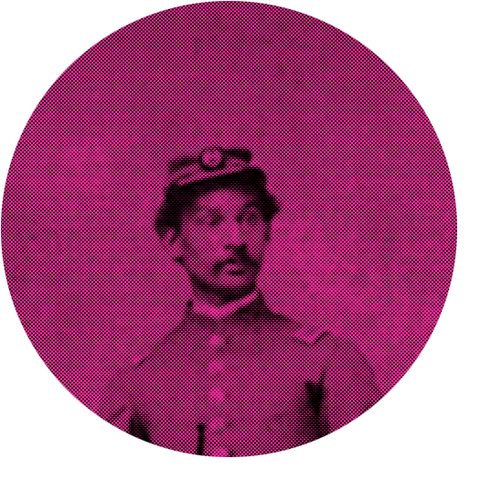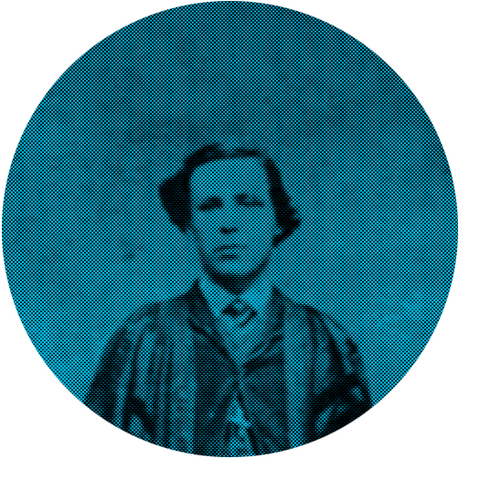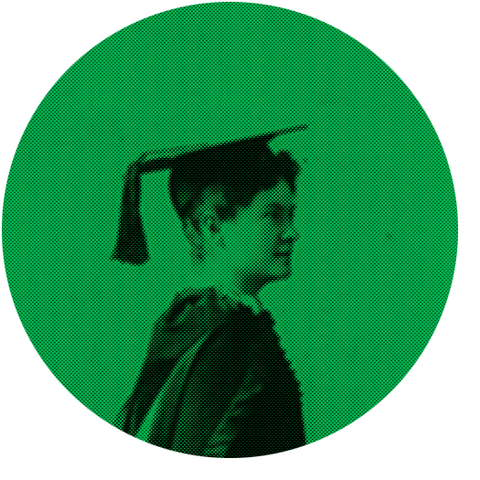Breadcrumbs
U of T Medicine Celebrates Its Trailblazers
The Faculty of Medicine at the University of Toronto is celebrating the graduates who helped open the doors for Black, Indigenous and Female medical students by being among the first to walk through them. In a banner unveiled on the Medical Sciences Building, the images of Drs. Anderson Ruffin Abbott, Oronhyatekha (who was baptized as Peter Martin) and Augusta Stowe (later Augusta Stowe-Gullen) are displayed. Learn more about U of T Medicine’s trailblazers.

| Dr. Anderson Ruffin AbbottClass of 1861
Dr. Abbott was born in Toronto in 1837. In 1857, he studied under Dr. Alexander Augusta for four years at the Toronto Medical School, a propriety school that preceded the Faculty of Medicine at the University of Toronto. Dr. Abbott received a license to practice from the Medical Board of Upper Canada in 1861, becoming the first Canadian-born black doctor. Dr. Abbott felt compelled to apply his medical services to the American Civil War effort and served in a segregated regiment in 1863. Dr. Abbott was a friend of President Abraham Lincoln, and accompanied Elizabeth Keckley to the Peterson House to hold vigil on the evening of Lincoln’s assassination. Returning to Canada in 1866, he established a medical practice and was admitted to the College of Physicians and Surgeons of Ontario in 1871. In 1894, Abbott was appointed surgeon-in-chief at Provident Hospital in Chicago, the first training hospital for black nurses in the United States. Prepared by Ike Okafor |

| Dr. OronhyatekhaClass of 1867
Dr. Oronhyatekha was born on the Six Nations of the Grand River Haudenosaunee (Iroquois) Territory near Brantford, Ontario. Though baptized as Peter Martin, he was known for most of his life as Oronhyatekha, which means “Burning Sky” or “Burning Cloud” in the Mohawk language. After being selected to deliver a welcome address to the visiting Prince of Wales during a visit to Canada, it is said the Prince was so impressed, he arranged for Oronhyatekha to study at the University of Oxford. He was a good natured, athletic and ambitious man. Upon his return to Canada, Oronhyatekha studied medicine at the University of Toronto, where he earned his MD in 1866 – becoming only the second Indigenous Canadian to become a practising doctor. He practiced medicine at the Bay of Quinte (Tyendinaga Mohawk Territory) and in Frankford Ontario, as well as throughout southwestern Ontario and western New York State. In the years that followed, Oronhyatekha served as a member of Canada’s National Rifle Team, President of the Grand Council of Canadian Chiefs and led the Independent Order of Foresters – a fraternal order that has evolved into an international member-based insurance company. He was the first non-white member of the group, and eventually became the Supreme Chief Ranger, recruiting members in Canada, the US and overseas. He moved their office to Toronto and opened a ten-story building at the Temple Building at Richmond and Bay, which for a decade was the tallest building in Toronto (and the British Empire). He donated his personal archives and artifacts to the Royal Ontario Museum as one of its founding collections, which is remarkable because it signified “preservation in the time of assimilation.” Over 10, 000 people attended his visitation and 3,000 attended his memorial service at Massey Hall on March 6th, 1907. Prepared by Dawn Maracle |

| Dr. Augusta Stowe-Gullen (nee Stowe)Class of 1883
Dr. Stowe-Gullen was educated at the Toronto School of Medicine and in 1883 became the first woman to graduate from a Canadian medical school. She was the daughter of Dr. Emily Stowe, Canada’s first practicing female physician. Immediately after graduating, Dr. Stowe-Gullen was appointed Demonstrator in Anatomy at the Woman’s Medical College in Toronto. In 1890, she was appointed Lecturer on Diseases of Children, subsequently Professor of Diseases of Children. She also served among the original staff members of Toronto Western Hospital. Dr. Stowe-Gullen was very active in professional life, serving on numerous medical and education boards and committees. She was also active in the suffrage, temperance and other social movements. She was among the founders of the National Council of Women and she succeeded her mother as President of the Dominion Women’s Enfranchisement Association in 1903. Under her leadership, women in Ontario secured the right to vote in 1917. In 1935, she was awarded the Order of the British Empire. She is known for her quotation "When women have a voice in national and international affairs, wars will cease forever." Prepared by Julie Lafford |